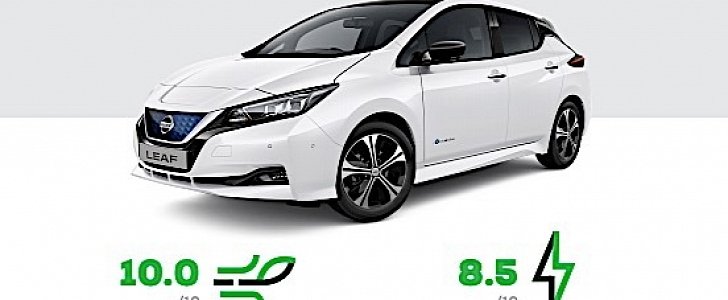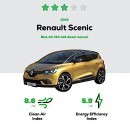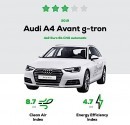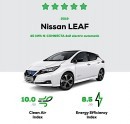For the second time in four months, the newly established Green NCAP released a batch of results for the cars it tested according to its procedure. And this time, the focus was on diesel more than anything else.
In the first test, conducted at the end of February, Green NCAP rated 12 cars, only two of which achieved the maximum five-star rating: the Hyundai Ioniq and BMW i3. This time, of the five cars tested, only one did the same: the Nissan Leaf.
Green NCAP tests cars in a complicated manner, with the stated goal of providing a comprehensive picture of the well-to-wheel emissions of the most popular vehicles. That is showing how a car impacts the environment while being made, operated and eventually destroyed or recycled.
The organization has two indexes to measure performance: the Clean Air Index (measures how a vehicle mitigates emissions like unburnt hydrocarbons, carbon monoxide, nitrogen oxides, and particulates) and the Energy Efficiency Index (measures the efficiency with which energy is converted to propel the vehicle). The average of the two determines the number of stars a car will get.
As said, Green NCAP tested five cars this time. Apart from the Leaf, there was a compressed-natural gas powered Audi A4 Avant g-tron, one gasoline, the previous generation Opel Corsa, and two diesel cars, the Mercedes-Benz C220d 4MATIC and Renault Scenic dCi 150.
All of them, with the exception of the Corsa (four stars) achieved the same three-star rating. That means, in Green NCAP speak, they are equipped with regular emission abatement systems and fuel-saving technology, but are not outperforming competitors.
And they scored so low because they had “less impressive” performances in the Energy Efficiency Index.
The work Green NCAP is currently doing might someday change the way we perceive vehicles. A long time from now, their tests should form the backbone of a database that will contain emissions and efficiency information about any type of car, across powertrain types.
Green NCAP tests cars in a complicated manner, with the stated goal of providing a comprehensive picture of the well-to-wheel emissions of the most popular vehicles. That is showing how a car impacts the environment while being made, operated and eventually destroyed or recycled.
The organization has two indexes to measure performance: the Clean Air Index (measures how a vehicle mitigates emissions like unburnt hydrocarbons, carbon monoxide, nitrogen oxides, and particulates) and the Energy Efficiency Index (measures the efficiency with which energy is converted to propel the vehicle). The average of the two determines the number of stars a car will get.
As said, Green NCAP tested five cars this time. Apart from the Leaf, there was a compressed-natural gas powered Audi A4 Avant g-tron, one gasoline, the previous generation Opel Corsa, and two diesel cars, the Mercedes-Benz C220d 4MATIC and Renault Scenic dCi 150.
All of them, with the exception of the Corsa (four stars) achieved the same three-star rating. That means, in Green NCAP speak, they are equipped with regular emission abatement systems and fuel-saving technology, but are not outperforming competitors.
And they scored so low because they had “less impressive” performances in the Energy Efficiency Index.
The work Green NCAP is currently doing might someday change the way we perceive vehicles. A long time from now, their tests should form the backbone of a database that will contain emissions and efficiency information about any type of car, across powertrain types.






